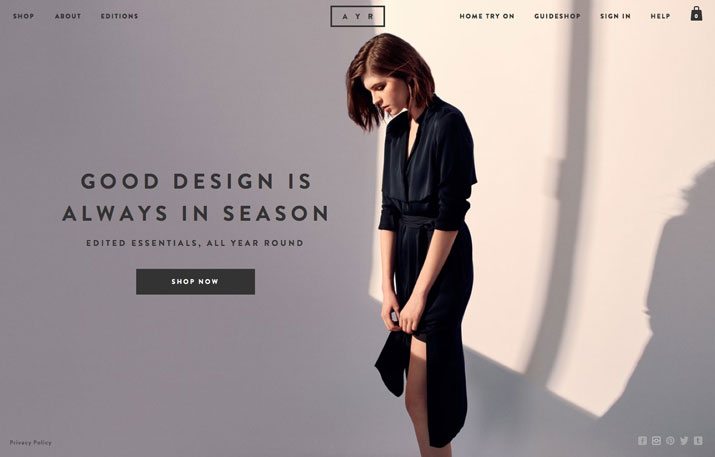Table Of Content

Consider the preferences and expectations of your target audience. For example, if you’re designing a website for a luxury brand, a symmetrical layout might appeal to users who appreciate elegance and sophistication. Take this example featuring massive mountains that have a lot of visual weight. If you’d have captured just the lake and the mountains, the visual weight of mountains will make the image unbalanced.
- Examples of Asymmetrical Balance in Action
I started this series to show how all of these principles arise out of human perception and gestalt theory. The principles are based on how we all perceive and interpret our visual environment. Content-heavy websites such as news and magazine websites exhibit mosaic balance as well. In the screenshot, I’ve removed the background image behind the top of the page. It’s a good example of how radial balance doesn’t necessarily require the use of circles. A line is drawn from the lower-left corner to the center of the page.
SYMMETRICAL BALANCE
You can layer rugs of different patterns and sizes to create a sense of depth and dimension. For example, place a large, solid-colored pet-friendly rug on the floor and then layer a smaller, patterned rug on top. The juxtaposition of patterns and sizes will create an engaging, asymmetrical effect that adds personality to your home. A proper asymmetrical layout automatically brings the viewer’s eye to the focal points – the gaze naturally settles on the critical pieces of the design first. By positioning and adjusting elements on a page, you can direct the eye to the different areas.
Silversea Unveils Further Design Details for Silver Nova - Cruise Industry News
Silversea Unveils Further Design Details for Silver Nova.
Posted: Thu, 28 Apr 2022 07:00:00 GMT [source]
Color and Size
Translational Symmetry is achieved by relocating an object to another position while maintaining its general or exact orientation. It is generally used for borders to hold the intricate patterns “in-line” on a flat surface or a two-dimensional surface. Many times altering the size of the recurring pattern in same orientation can be used to show distance, movement or proximity as well. It is the ideal way of creating speed, sound and action in your design. An asymmetrical design, on the other hand, may be more effective for a younger, more adventurous audience interested in exploring unique and unconventional content. When the two halves of your design have equal visual weight, they both grab adequate attention.
Mastering symmetry and asymmetry

One of the places asymmetry is really beginning to bloom is in the minimalism design trend. With designers using so much space, it is easy to balance a simple object or image against a larger white or dark background. For a long time, symmetry was thought of as the gold standard of design.
Examples of Asymmetrical Balance
The brain doesn’t have to try to process the way the room is set up and what the pieces mean or how they fit. When a design is unbalanced, the individual elements dominate the whole, and the composition becomes less than the sum of its parts. In some projects, unbalanced might be right for the message you’re trying to communicate, but generally, you want balanced compositions. It’s possible to create the most engaging and aesthetically pleasing designs by combining symmetry and asymmetry. Of course, it’s fairly easy to achieve a balance in a symmetrical layout. All you need to do is put the same weight on the right and left parts of a page.
Topics in This Article
Understanding symmetry versus asymmetry isn’t difficult, but getting it just right can be tricky at first. But using a leading tool like Linearity Curve (formerly Vectornator) will empower you to design anything you can imagine up to 30% faster. You can create sophisticated illustrations, spectacular layout mockups, and balanced visuals on the go whenever you want. When it comes to asymmetrical design, the task might be harder. You might need to have several small items on one side to balance a large object on the other side.
From desktop to benchtop with automated computational workflows for computer-aided design in asymmetric catalysis - Nature.com
From desktop to benchtop with automated computational workflows for computer-aided design in asymmetric catalysis.
Posted: Fri, 17 Jul 2020 07:00:00 GMT [source]
The Definition of Asymmetrical Balance
In this guide, we’ll see how symmetry and asymmetry work for design. As more complexity is required in more sophisticated designs, we find that symmetric balance becomes increasingly difficult to attain. If we try to make it happen in a less simplistic design, we’ll notice how much force we have to use to keep that symmetry.
Dan Raymer Designs (his own designs or as design manager)
Unlike symmetrical balance, which often results in a more formal and rigid scheme, asymmetrical balance offers greater flexibility and encourages creativity. Interior designers who utilize asymmetrical balance aim to create a sense of equilibrium and stability while making the space feel lively and interesting. Balance that doesn’t have Symmetry is known as asymmetrical balance. For instance, you might put heavy elements on one end of the canvas, and balance it with lighter objects to the opposite side of the design.
Instead of placing matching end tables on either side of a coffee table, consider a tall floor lamp on one side and a unique sculpture on the other. This adds visual interest and makes the space more dynamic, engaging the viewer’s attention. Now that we have discussed the various kinds of Symmetry balances and how different designers incorporated them in design let’s understand what Asymmetrical design is all about. When it comes to web design, designers often use it one a single element of the web page instead of designing the entire website in that manner. The Public Broadcasting Service logo makes excellent use of transitional Symmetry fused with monochrome to show contrast in their logo.
Layering different area rugs can be another expressive tool to create a rich and tactile environment. While we’ve used the concept of balance to explain asymmetric and symmetric balance, there’s more to it than that. While there are many basic principles of design — rhythm, proportion, emphasis, unity, and more — balance is vital. The stars and the clouds on the upper half of the painting are balanced by the detailed portrayal of the town on the bottom half of the painting. Just like the moon and the cypress trees balance each other through the contrasting relationship of light and dark, the same can be said for this as well.
Rotational (radial) symmetry can be observed when visual objects of a composition perfectly rotate around the center of the composition. As long as they share the same center, distance, frequency, and angle of visual objects, rotational symmetry exists. The symmetry of the visual objects tells us that we should focus on the building as a whole, not on any particular visual object.

No comments:
Post a Comment